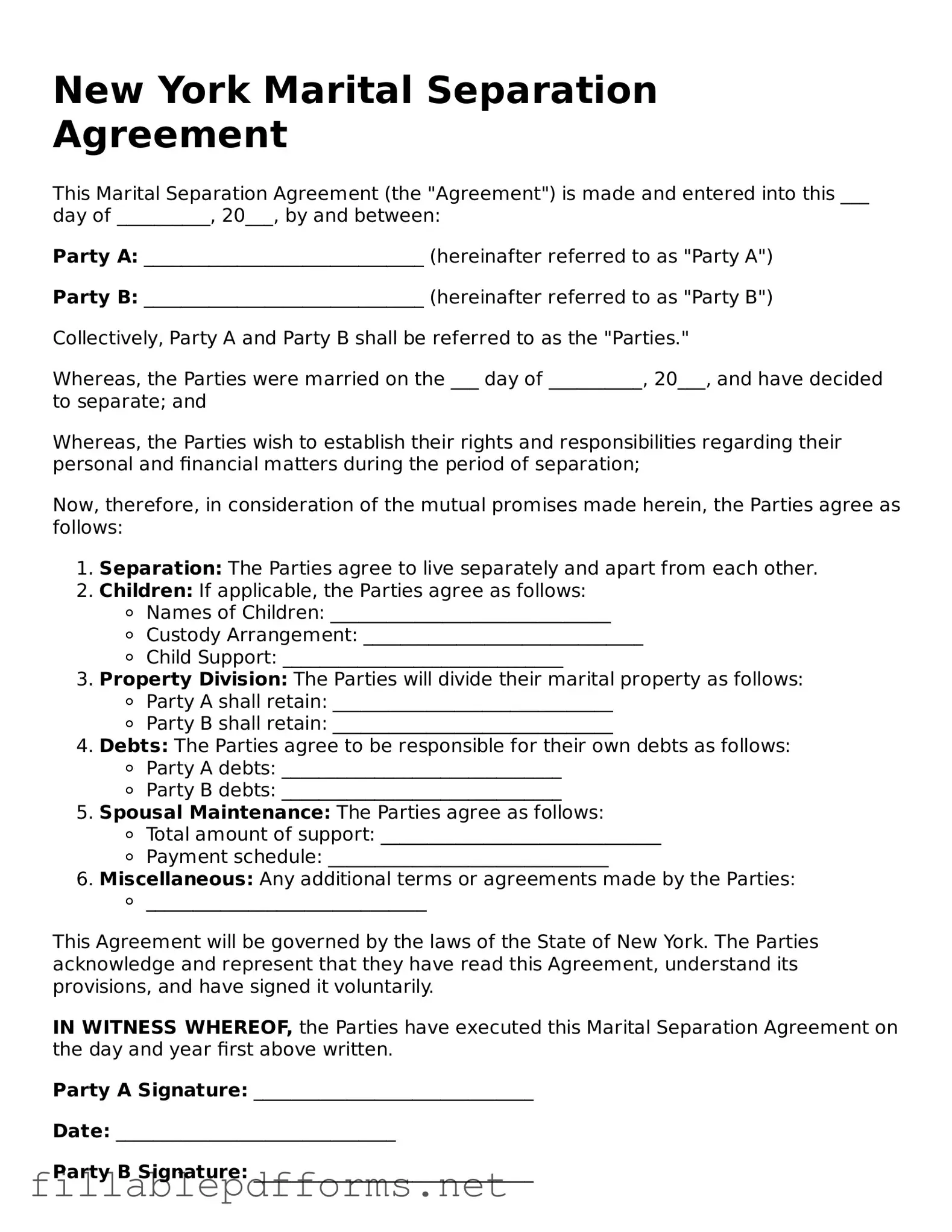When couples decide to separate, navigating the complexities of their relationship can be both emotionally and legally challenging. In New York, a Marital Separation Agreement serves as a crucial tool for couples seeking to outline their rights and responsibilities during a period of separation. This legally binding document covers essential aspects such as the division of property, spousal support, and child custody arrangements, ensuring that both parties have a clear understanding of their obligations. It also addresses issues like debt responsibility and health insurance coverage, which can be pivotal in maintaining stability during a tumultuous time. By formalizing these agreements, couples can minimize conflict and lay the groundwork for a smoother transition, whether they plan to reconcile or proceed with a divorce. Understanding the intricacies of this form is vital for anyone considering separation, as it not only protects individual interests but also fosters a more amicable resolution to what can often be a contentious process.
